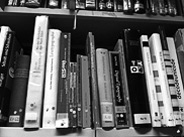
“The only actual typographical mistakes are indifference and ignorance.”
Friedrich Forssman &
Ralf de Jong, 2008
How were the rules/principles of typography created and how are they currently being interpreted by graphic designers? The assembly of a great amount of diverse thoughts, statements, theses, rules, prohibitions or suggestions in typography, at different moments of history, helps in the construction of critical thinking about their relevance. Collecting and cataloguing different examples of graphic design work according to those principles will not just illustrate the use of typography in contemporary production, but also widen the perception about possible interpretations. Gut zum Druck enables the analysis of contemporary graphic design from the typographic principles perspective, in an attempt to discuss the importance of typographic principles as fundamental knowledge yet today, offering new means for building individual interpretations and positions in regard to typography.
In the early days of letterpress printing, moveable type was composed by the hands of the typesetter. Metal sorts were set into words and then lines of text. Lines of text were arranged in columns with the aid of a composing stick, and then into columns. Empty spaces between words and lines were filled by slugs or strips of lead. All letters had to be perfectly aligned and have exactly the same height in order to achieve an even surface. The page image was then bounded with a string, and later fixed on a metal frame. All that being done, a page could be printed. A single page! After all pages were set, a book was set. One first print of the book was compared with the manuscript by the corrector of the press, who would check for text or setting mistakes, from orthography to page order, line by line. Every page was closely examined in order to guarantee that no glyph was damaged or misplaced. An internal correction phase in order to improve the work followed. After all problems were solved, two copies of the book were sent to the commissioner along with the manuscript. Further corrections could be requested until everything was accordingly set. In the end, when all was perfectly corrected, the commissioner would grant the work with the Gut zum Druck stamp – in latin Imprimatur – along with his signature. The book can finally be printed.*
Today the process is totally different. A major shift is that a lot of this work is now in the hands of the designer. It is still a long process, which requires strenuous effort to have everything set accordingly. It is difficult and tiring. Each of the works in the collection presented was once endorsed, deserving the quality stamp Gut zum Druck.
* The process that leads to Gut zum Druck is described in details by Jan Tschichold in his book Erfreuliche Drucksachen durch gute Typographie, from where I took inspiration for the name of this project.